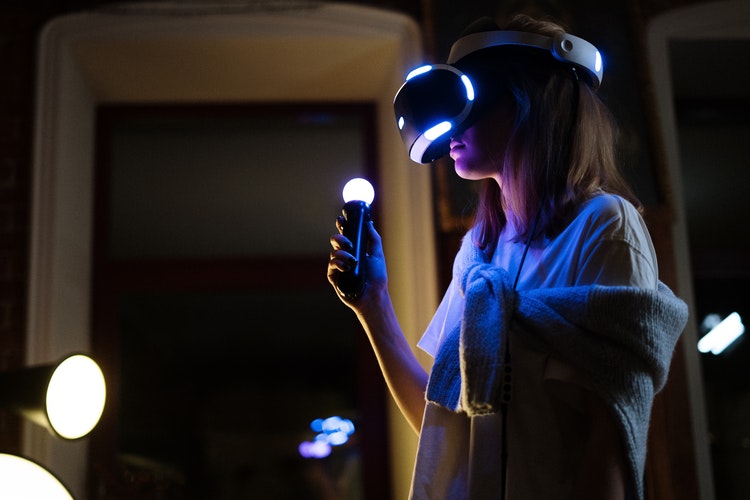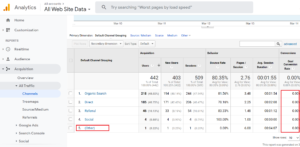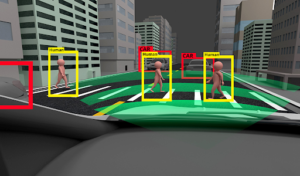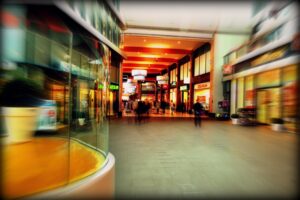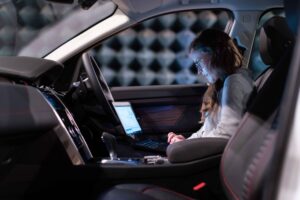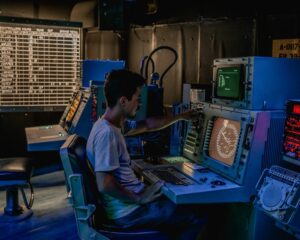Nowadays, the customers focus on product quality rather than falling into the trap of marketing. For businesses and service providers, it is now mandatory to surpass their customers’ expectations to engage them effectively.
That means more sophistication is required not only in product development but also in digital marketing. Thus, incorporating Virtual Reality and Augmented Reality technology in marketing strategies is critical for having a good business profit.
Though AR and VR technologies have shown early success in different industries like Gaming, Entertainment, Sports, Travel, Education, etc., nobody knows much about the usage of these technologies in the marketing world.
Is Augmented and Virtual Reality in marketing is an innovative way of using existing technologies and marketing methods to attract customers and online visitors?
“According to eMarketer reports, the AR ad revenue will surpass $2 billion by 2022 ends.”
It is because there are some ongoing trends in AR and VR marketing by businesses to promote their brands, increase customer shopping experience, and do the right effective marketing
Today, we are going to explore those trends, use cases of AR and VR; how companies and businesses use these two technologies? How these two are changing marketing methods?
But, firstly, we need to understand – what are AR and VR? How they serve our purpose?
Let’s start and find answers to all these questions!
Introduction to Virtual Reality and Augmented Reality!
Augmented Reality utilizes technology to expand and augment sounds, designs, graphics, text over the present reality, the real world. Here you don’t move to any other dimension, but you carry elements of the digital environment to your physical world; thus, augmenting reality.
On the other hand, Virtual Reality can’t work with a virtual environment. And to feel the virtual environment, one needs to use a headset. This headset has a virtual environment in it. Once you put it on your head, you start sensing it, feeling it.
In the case of Augmented reality, you can simply experience it from smartphones while running through applications.
VR is a computer-generated artificially simulated environment either of a real-life scenario or a complete imagined scenario. You experience this 360-degree environment first-hand via vision and hearing. You can explore and move around in whatever manner it interests you.
Remember, in AR and VR, a digitally computerized environment can be anything!
“According to PS Market Research, the global AR and VR market size will rise at 42.9% CAGR from $37 billion in 2019 to $1274.4 billion in 2030.”
How AR and VR Is A New Marketing Tool?
Today, digital technologies used in conventional advertising involve online video, pop-ups, content marketing, pop-unders, displays, banners, etc. As most people find it annoying and intrusive, a new marketing technique is needed; a technique that provides a novel experience to the online visitors and target audience.
Thus, AR and VR in marketing can play a dramatic role. Here in this blog, we will prove it!
Leading businesses have their own digital marketing strategies incorporating AR/VR to attract customers, product service promotion, increase sales & profit, maintain and manage customers, and provide better unique experiences to the online shoppers.
The common usage of AR and VR is in the industries like Healthcare and Medicine, Astronomy, Education, Defense, eCommerce & consumer goods, Gaming, Education, Sports, Entertainment, and many more.
Integrating digital technology with current marketing strategies for transforming the customers’ shopping experiences is the motto of AR/VR as a marketing tool.
Have you ever heard of ARM? No, then you must continue reading this blog further!
Artificial Reality Marketing, aka ARM, is the latest marketing strategy that encourages multi-media promotional activity to increase interaction between customers and brands via emotional engagement.
By combining traditional advertising with 3D images of products onto customers’ mobile devices, ARM focuses on better publicity of the brand to increase customer loyalty and build long-term relationships while offering a valuable experience to visitors, users, and customers.
Organizations coordinate these innovative AR/VR technology into showcasing systems for giving the more extravagant and more practical feel of their items (AR catwalks, AR display areas), for empowering customers to take a stab at items (AR mirrors), and for bringing issues to light of their image (imaginative and intelligent AR crusades).
AR and VR innovations give customers a chance to investigate items and tweak them as per their customization and personalization.
If you are interested in doing ARM for your business brand, then you need to contact one among different top ai software development company
Examples of AR and VR in Marketing
In 2016, Audi offered an interactive AR brochure to its customers allowing them to explore the cockpit of Audi TT virtually.
By using the HTC Vive VR headset, Lowe created a VR Holoroom for the customers so that they can test and select tools, equipment, and different DIY skills.
Retailers use VR to help shoppers in making purchase decisions in online shopping.
The world’s first virtual department store was launched by eBay Australia, where shoppers view products’ 3D images, examine the features, and purchase it online. VR creates a better shopping experience.
AMC Theaters app includes elements of augmented reality. The app scans the movie poster and finds out everything about the film such as release dates, the trailer, and the cast. Also, one can purchase tickets and book seats if the film is released.
Sephora’s “Virtual Artist” tool has been a star since 2016 and is still the most famous example of AR use case in the beauty industry.
There are AR-based virtual fitting rooms for online shoppers to try clothing online.
Volvo uses AR in the Volvo X-ray app where the customers can view the interior and features of a Volvo. For this, you need to use iPads
Starbucks Reserve Roastery in Shanghai offers an immersive in-store AR-based app to the customers. Starbucks is in line to use VR technology through which it will transport its customers to the best coffee farms in the world.
“AR and VR marketing till now is a success because it gives a Holistic customer experience, Focus on the simple, straightforward concept, Enhance shopping experience – make it useful, Must be effective, and should Measure profitability.”
Engaging and Interactive Content Is King In Marketing!
On social media platforms, Dynamic Content has proven to be a very effective, impactful, interactive, and popular method of advertisement.
AR and VR allow the business to connect with consumers via storytelling. With an interactive environment and creative brand story, every company can open a window for itself to attract more consumers.
Unlike older marketing technologies, AR and VR are not limited to send a message by the brand to the consumers. Involvement of content, traditional marketing strategies, digital marketing technologies, and video advertising is an active process of the new marketing methods.
What Is The Future of Marketing?
AR and VR technologies, Augmented reality apps for businesses can make innovative, interactive, and joyful in-store experiences for the customers. Customers will get better online shopping assistance as the technology forwards in the future.
Moreover, AR/VR technologies are adaptable and easily integrable in our physical and digital worlds as they offer interactivity, a level of engagement, and give great excitement.
Future marketers will combine online technologies and offline experiences to create an omnichannel marketing strategy that helps them improve sales. In the near future, we can surely see some brands doing out-of-box brand marketing while strengthening the bonds with customers.
Currently, the adoption of these technologies is slow, and they are costly. But in the future, AR and VR will be highly popular and useful.
Also, in the future, we will see the usage of XR – Extended Reality, which will come into operation with the intersection of VR and AR.
Till then, keep reading our blog posts to get better knowledge about the tech changes and innovative technical things happening around you!

